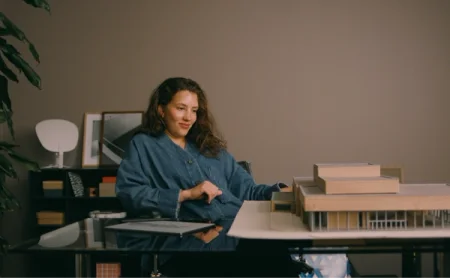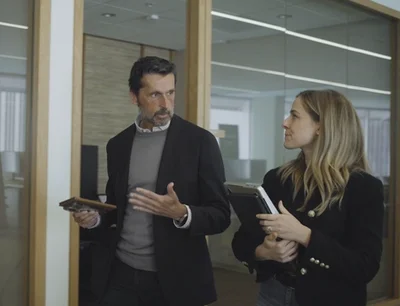Optimize your focus time with deep work
Produce more high-quality work and capture your concentration with these four approaches to tackling more demanding tasks.
Be honest: how many times a day do you check your phone?
Our brains may be mighty, but we still have limited cognitive capacity. And according to a 2021 study by King’s College London’s Centre of Attention Studies, people vastly underestimate how often they check their phones.
The average guess in the study was about 25. In reality, it was as many as 80 times a day. Despite their best efforts, 50% of people of all ages said they sometimes can’t stop checking their phone when they’re supposed to be focusing on other things.
With modern technology constantly drip feeding us information and competing for our attention, what’s the answer when we need to get things done?

What is deep work?
Think about what you do during a normal workday. What comes to mind?
On any given day, you probably attend a handful of meetings, check emails and direct messages, and complete administrative tasks. This is shallow work. That’s not to say it isn’t important — it just requires less of your total mental capacity.
Now, imagine work that sits at the other end of the scale. Tasks that require your full attention, where you need to stay focused to come up with a creative solution.
This is deep work. Cal Newport, a professor of computer science at Georgetown University and bestselling author, defines it as “the act of focusing without distraction on a cognitively demanding task.”
Deep work has become something of a lost art. In the paper cited above, 47% of respondents said they think “deep thinking” has become a thing of the past, and 67% said that switching attention between devices and media prevents them from being able to complete simple tasks well.
We’re big fans of deep work at reMarkable. Every day, we see the incredible work that people are capable of — if they just give themselves the time and space to focus. With deep work, you can train yourself to reach that state more often.
We recommend Newport’s book, Deep Work: Rules for Focused Success in a Distracted World, for a closer look into the research behind distraction-free work. In this article, we’ll explain four different ways to make deep work a part of your day.
Deep work is becoming increasingly valuable at the same time that it’s becoming increasingly rare. Therefore, if you cultivate this skill, you’ll thrive.
- Cal Newport
How to practice deep work
Give yourself at least 90 minutes of focus time. Turn off all distractions. Work on a single task.
It sounds so simple, but fair warning: Your first sessions may be disheartening. You could find yourself staring at a blank document, unable to get started. Maybe you’ll catch yourself glancing at your phone. Before you know it, your focus time is up.
Over time, you’ll train yourself not to search for a distraction when you encounter a task you can’t immediately solve. Think of it as giving your brain a good workout — the more you do it, the easier it gets.
There are four common approaches to deep work: rhythmic, monastic, bimodal, and journalistic. We recommend the rhythmic approach, which is best suited for office life, but here’s a short description of all of them:

The rhythmic approach to deep work
What it is: The rhythmic approach is for many the natural entry into deep work. As the name suggests, this approach involves finding a rhythm that makes deep work a habitual part of your workday.
How to get started: Look at your calendar. Are there large chunks of time you could block off for focused work? Ideally, these sessions should last at least three hours, and occur at the same time every week.
Once you’ve blocked time in your calendar, protect it. Consider setting your calendar to automatically decline if someone tries to book a meeting during a deep work session. This will create a clear divide between deep and shallow work, letting you focus on one type of work at a time instead of switching back and forth.
Who should use it: The rhythmic approach is ideal for anyone with a predictable schedule. It balances the need for focus time with the demands of a job that requires you to be available.
Watch the video above for a creative interpretation of the rhythmic approach to deep work.
The monastic approach to deep work
What it is: The monastic approach is the most extreme version of deep work. It involves embracing a monklike existence, focusing solely on one or more main projects for weeks or even months at a time.
How to get started: To adopt the monastic approach, you’ll need to eliminate as much shallow work as possible. That might mean letting email pile up while you work, or not touching your phone for weeks.
Anything that isn’t directly related to your main project needs to be put on hold. You can deal with shallow work occasionally — for example checking your inbox once a week — but nearly all of your focus should be on deep, creative, cognitively challenging work.
Who should use it: The monastic approach is popular with some academics, authors, and others who are expected to deliver major projects. Since you’ll be difficult to reach during deep work sessions, the approach is best suited for people who do most of their work alone.
The bimodal approach to deep work
What it is: The bimodal approach involves splitting your time between deep, monastic-style work and shallower work. Think of it as a halfway point between the monastic and rhythmic approaches.
How to get started: Like the rhythmic approach, the bimodal approach also involves blocking deep work sessions in your calendar. However, this approach favors longer sessions — at least a full day, but as long as several months depending on your own needs. Spend the rest of your time on shallow work.
Who should use it: If you do project-based work as part of a larger team, the bimodal approach may be a worthy compromise between shallow and deep work. With dedicated slots for both kinds of work, you’ll be able both to make progress on larger projects and check off weekly to-dos.
The journalistic approach to deep work
What it is: The journalistic approach emphasizes the ability to quickly move between shallow and deep work depending on what’s on your agenda.
How to get started: The journalistic approach doesn’t require preparation as much as flexibility. When you find yourself with a sudden opening in your calendar — even if it’s just half an hour — dive into deep work until your next appointment. Over time, the work during these shorter sessions add up to major progress.
Who should use it: People with unpredictable schedules may have much to gain from using the journalistic approach. Note that this approach also requires the discipline not to procrastinate during the brief windows that open for deep work.
It can be mentally draining and professionally unfulfilling to feel as though you’re only working on shallow tasks. For a more stimulating workday, try incorporating more deep work. You may be amazed to discover what you’re capable of creating.


